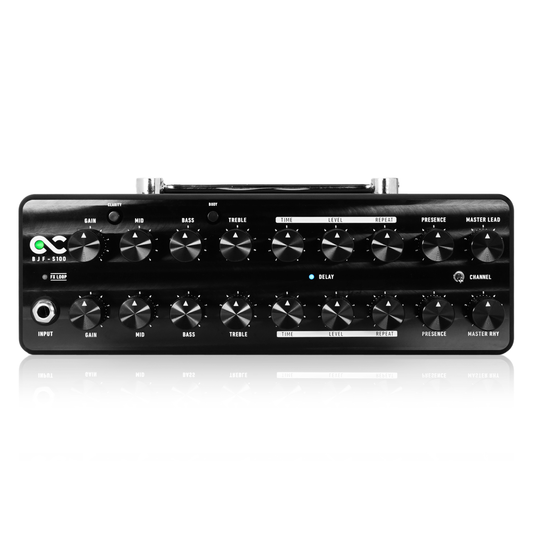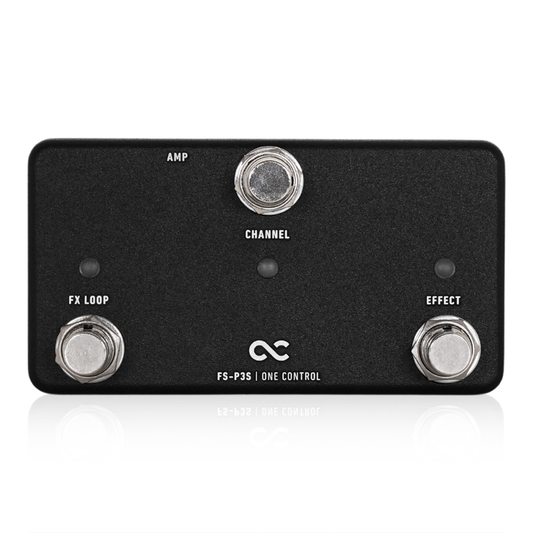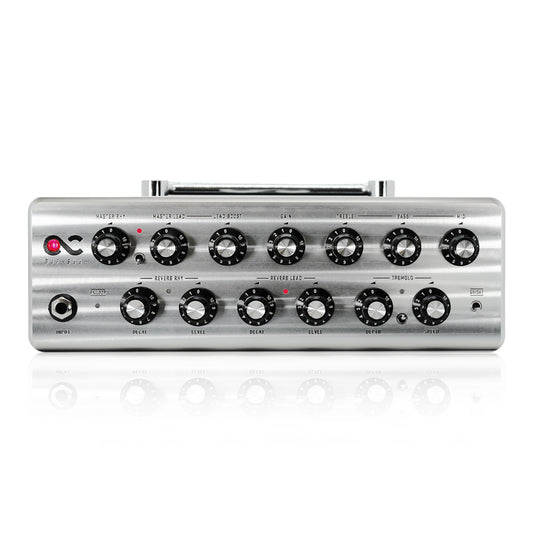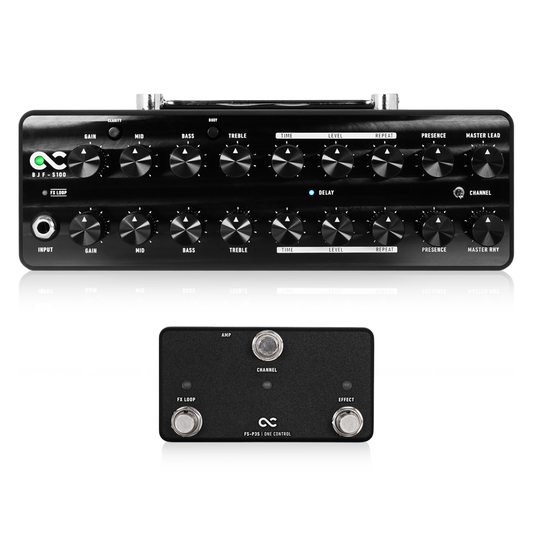Interview with the Legend, Björn Juhl from BJFE/One Control
Birds singing the story, rising from the ashes. Once again, I am REBJÖRN
Few innovators in the musical instrument manufacturing and design business have had the sort of impact of Björn Juhl. From his early roots as a punk rock guitarist in the late 70s and early 80s until today, he has continued to blaze his own path sonically and aesthetically.
Starting his electronics work as an amplifier technician, he built the first BJFE pedal (the Baby Blue Overdrive) to have something on his table to show to musicians at a guitar show. This led to the establishment of BJFE as one of the most coveted boutique pedal brands in the world, with BJFE being seen on pedalboards and in studios everywhere. Each pedal was built and finished by hand, with his talented wife Eva providing custom artworks both inside and outside of the pedals.
Many designers who have created popular products will rest on their laurels and continue to simply riff on their old designs – but Björn has continued to evolve year after year. And over the past two decades, he has helped to create some of the most innovative and sonically pleasing amplifiers and effects pedals available for a variety of companies, as well as continuing to make the handmade BJFE series pedals in his workshop. After attempting to translate his designs for other companies for greater availability and lower cost, Björn finally began to work with one of his biggest fans and supporters in Japan, Tomokaz Kawamura from One Control/LEP International. And now, with the release of the new BJF-S100 guitar amplifier, we spent some time with Björn to discuss his past, present, and future in analog sound design.
Excellence in sound at a very deep level
Collapsible content
Q: What is your design philosophy and intentions when you are creating?
The main quality that I can make an impact with as a designer is PLAYABILITY. Inside the sounds there are specific frequencies that make things more playable and more fun. Beyond that, there as frequencies that either hinder or help the player. I study all the amazing sounds we all crave and look at what makes them great. Players get a reaction to what they are hearing and feeling, and it enables them to play more and better. This is what I seek with all my designs.
Q: What product was your first for One Control?
We started with the BJF Buffer. At the time, buffers were considered to be evil on pedalboards and everyone was seeking true-bypass pedals to avoid the issues present with older buffer designs. After working with several famous guitarists and doing much experimentation on my own, I realized the issues related to output and input impedances and created the BJF Buffer. This in turn was brought to One Control both as a standalone pedal and featured in the loop switchers. Buffers are not necessarily bad. They are supposed to do nothing. But how do we define nothing? I used my knowledge of guitar pickups, cable losses, and how various guitar outputs work inductively. I approached this both sonically and empirically in terms of design – something that would work efficiently and sound great.
Q: What is your favorite of the One Control pedals that you have designed?
The latest one, invariably. Or one that is not available yet or still in design. I am always thinking of how I can make the products better. A good example is the Golden Acorn, an overdrive that I designed to capture that “D” style amplifier that guitarists who play the most intelligent licks through. Although I personally cannot play this sort of style, I did work with one of my favorite guitarists who does play this style and realized that the original design of this pedal was just not fun and inspiring enough to play for me. So, I continued to work on the design and added a little more “sparkle” to this pedal so that it will satisfy the “intelligent licks” guitarists as well as the rock and roll guitarists like myself. It has to be fun and inspiring to play, or else why bother? So I reworked this pedal into something I truly enjoy. And I am looking at the entire OC product line to see if there are any others I can update as well.
I don’t have one favorite pedal, because I would be bored. I don’t think there is any “perfect”. It simply does not exist. I do not believe there is any ultimate guitar tone. I always look to the future, seeking something enchanting, mind-blowing, and most of all fun to play.
Q: Tell us about your experiences as an amp designer.
Not naming names, but I have been designing and building amps for decades. My history is pretty well-known at this point. But even with other previous companies building my designs, I have always made more of my handmade products. I set out very early on in my career to fully understand both solid-state and tube design. Many current amp designers understand tube amp design, but few understand solid-state design. This was very common in the late 60s and 70s but has become almost an esoteric science now. There are very few people left alive in the world who have both skill sets and are still working in the field. And this is precisely why former companies have hired me.
Q: How have you learned to navigate the new manufacturing processes and components used in One Control products?
SMD technology versus discrete older analog parts has been a learning process for me. I did get to work with SMD on a few products designed for one of my former companies, but with One Control I have been able to explore SMD manufacturing fully. One Control products have been far more complicated than my previous experiences. You have a wild array of different capacitances on an SMD design, unknown parts, and more. We have to be much more careful. It’s been a long growing process. You could say that the Professor had to go back to school. It’s been quite a journey from tubes to transistors to SMD. It has shaken up all that I previously knew. And there’s not too much that you can take from tube technology to SMD design.
Q: Do you feel like you have had to reinvent yourself?
Well, both of these technologies (tubes and older solid-state design) are going away. Transistors and tubes will eventually be extinct. And what does an analog designer do then? I am to design things that are not dependent upon current technology. So yes, I feel like I have been ReBjörn with my work for One Control.
Q: What do you try to accomplish with your new designs for One Control?
There are certain sounds that entice people to play and be inspired by the sound on a deeper level. Defining exactly what that is has been very important to me. I’m looking at how music affects the human brain. There are sounds that make the human brain smile and some that make it sick. Finding these great sounds that entice the brain is what I love to do. And how to transfer this knowledge to the next generation of digital designers is something I worry about. As for me, I will be learning for years to come. Filtering is something I have worked on since I started playing with electronics at age 13, and I have spent most of my life learning how to effectively filter sound. The magic resides in understanding how sounds affect the human brain, and I continue to try to put the enticing sounds into each product I design for One Control.
I’m trying to be like wine and become better with age, better and better at what I do. We need to flabbergast people and suck them in with sounds.
Q: Having known you for two decades, I know how hard you worked to create your original analog designs like the BJFE Honeybee. How much more work was required for you to effectively translate your original designs using the manufacturing processes at One Control?
It has been a great learning process. In the past, I have been limited by component selection and manufacturing quite a bit – and I do not believe in “mojo parts”. For me, I do not start with components – I start with an enticing sound that I want to create, and I use parts for their functions. With One Control, I have been able to be very hands-on at the factory level, training people how to build the products. Yes, in some ways it has taken me more time over this past decade to learn how to get exactly what I desire using the newer technology, but this has resulted in an entire line of pedals that sound and perform as I designed. And now we have the new BJF-S100 amplifier, the sister amplifier to the BJF-S66 we released several years ago. And designing and building the S100 has been my greatest challenge yet as a designer. The S100 is a great example of what I call ‘excellence in sound at a deep level.
Q: So, tell us about the design and creation of the new S100?
I imagined the sound of the old school guitar gods. In my town in Sweden, there was one guy who truly had the tone of the Gods, with the plexi UK stack and an amazing sounding echoplex tape delay. I wanted to bring that sound into any guitar player’s hands without the great cost or carrying such heavy gear to the gigs. As well, it had to be an amp that sounded just as great at low volume or direct recording as it does at high volume. While I am very happy with the BJF-S66 amplifier, it is a completely different animal than the S100. In my shop I have been using the S66 and the S100 together into a stereo wired 4x12 cabinet, and the two of them together is truly a luxury tone. And all of that tone, combined with two of my best echo and tremolo designs ever, weighs only 12 pounds.
Q: What makes the echo-voiced delay different than something like a standard delay pedal?
With both amplifiers, I tried to design something really special that was not already in the current line of pedals. In the S66 I have tweaked the Prussian Blue to be much more subtle and haunting, a reverb that allows the main sound to always be up front, yet always supported with ambience. And the tremolo section is designed in much the same way, so that it does not overtake the sound and gives a more hypnotic sort of sound. In the S100, I have taken all that I have learned from working on and repairing tape echoes for many years. I had noticed early on that the true guitar gods had their tape echoes tweaked, so that the heads were running at higher gain levels than they left the factory with. This gives a much bigger tone and gives some of that organic distortion to the signal that enhances the overall tone. The tape-voiced echo in the S100 allows the player to have “always on” echo that doesn’t dominate the sound – it enhances it – much as I remembered from going to hear the guitar god. You can set it for a very organic reverb-like sound or for more traditional tape delay. It is the fruit of my experience and experimentation making delay pedals for all these years, and I am very pleased with how good it sounds. You want the echo to be wild, but not take over your entire sound. It needs to be imperfect and a bit wild, because while people like rollercoasters, musicians love chaos. Anything that is rock and roll has this quality. And I wanted this to sound like the crème de la crème of the classic tape echoes we loved
Q: One Control initially showed the S100 at NAMM 2020, but it is finally shipping in 2023. What was the delay with production on the amp?
Well, COVID hit all of us, and we were all in a holding pattern for some time. Also, I had started rehearsals with the band I recorded and toured with in the 80s, The Bradshaws. We were releasing the original album on vinyl and had some shows booked, so I wanted to use the S100 in actual musical settings. As any musician will tell you, things tend to get VERY loud in smaller practice spaces. I began to notice things about the S100 that I could improve, especially at much higher volumes. While at lower volumes I was quite happy with the sounds, at much higher levels I wanted to be able to dial in a bit more clarity and articulation as well as adjust for the differences in humbucker versus single coil guitars. In addition, I improved the built-in speaker simulator and revoiced the EQ section. The S100 that is shipping now is essentially the S100 version 2 at this point. I also decided to add two switches that are essential to keeping the sound articulate and defined at all volume levels and with a wide variety of guitars.
Q: What do the two switches essentially do
One switch is for adding just the right amount of low mids. Especially when using an S or T style guitar, sometimes I felt like the tone just needed a little bit more in that low mid area. And if it starts to get a little congested at high volumes, I also added another switch to bring in some more highs to just enhance the high end a little. Maybe your LP style humbucker equipped guitar just needs a touch more sparkle, and this switch can do that. They may seem subtle – until you need them. And then they reveal their power.
Q: You have designed two completely different channels for the S100 – how are they different from the S66?
With the S66, it’s actually a single channel amp with what I feel is a clever lead boost circuit, which is how I wished a good vintage blackface USA style amp would allow you, if it had been modded. The S100 has two very different channels to do exactly what I wished a good vintage plexi style UK amp would allow. The first channel is cleaner than the second, and completely eats pedals for breakfast. I use the S100 first channel every day in the BJFE workshop to test pedals, because it sounds so good and is so fun to play on. There is a nice range of gain on this first channel, with the headroom of the 100 watt power amp, it can achieve a very easy to play “clean” sound, which I have always noticed many guitar players having difficulty with. After much discussion with Professor Tomo and other players who lean towards mostly clean playing, as well as remembering the cleaner sounds of the guitar gods of the 70s, this was my goal for the first channel.
The second channel starts where the first channel ends. Imagine the finest 4 input 100 watt plexi style head, the one our guitar god uses. Cranked up with some slightly worn-out tubes, with glorious distortion and gain. Of course, this amp has been to a good technician such as myself to dial it in to be the best it can be. This is where I started with the lead channel on the S100, and it is exceedingly FUN to play. Especially with the built-in echo, one can get completely lost in this sound for hours, which is exactly what I wish for players to do.
Q: What did you discuss with Tomo Fujita that influenced the S100 amplifier?
I refer to myself as “Mr Distorted” and to Tomo as “Mr Clean”. Mr Distorted believes that dirty and fuzzy sounds as so very fun to play and has been working for years to create something that Mr Clean would indeed have fun playing. And many clean style players may not realize just how much gain and distortion goes into making a great playable “clean” sound. The first channel of the S100 amplifier is my quest to create this amazing sound that is perceived as clean but also has enough gain, not too stiff, not too compressed. Tomo had been hearing the S100 all the time as I send him demos of pedals frequently. It has been a great challenge for Mr Distorted to create something that both he and Mr Clean would love, and I think we have done this with the S100.
Q: What does the future hold for you with One Control?
I will continue to move forward and learn. I don’t think there is any “perfect”. It doesn’t exist. There is no “ultimate guitar sound”. I’m always looking to the future, finding sounds that are enchanting and mind-blowing. The pursuit of this keeps everything going for me. There can be a lot of negative energy in this business. However, the amazing things I seek overshadow all of it. There are so many shades of amazing sound to find. The best sound ever will be the next one I find.
Bobby DeVito Interviewing Björn Juhl, September 2023
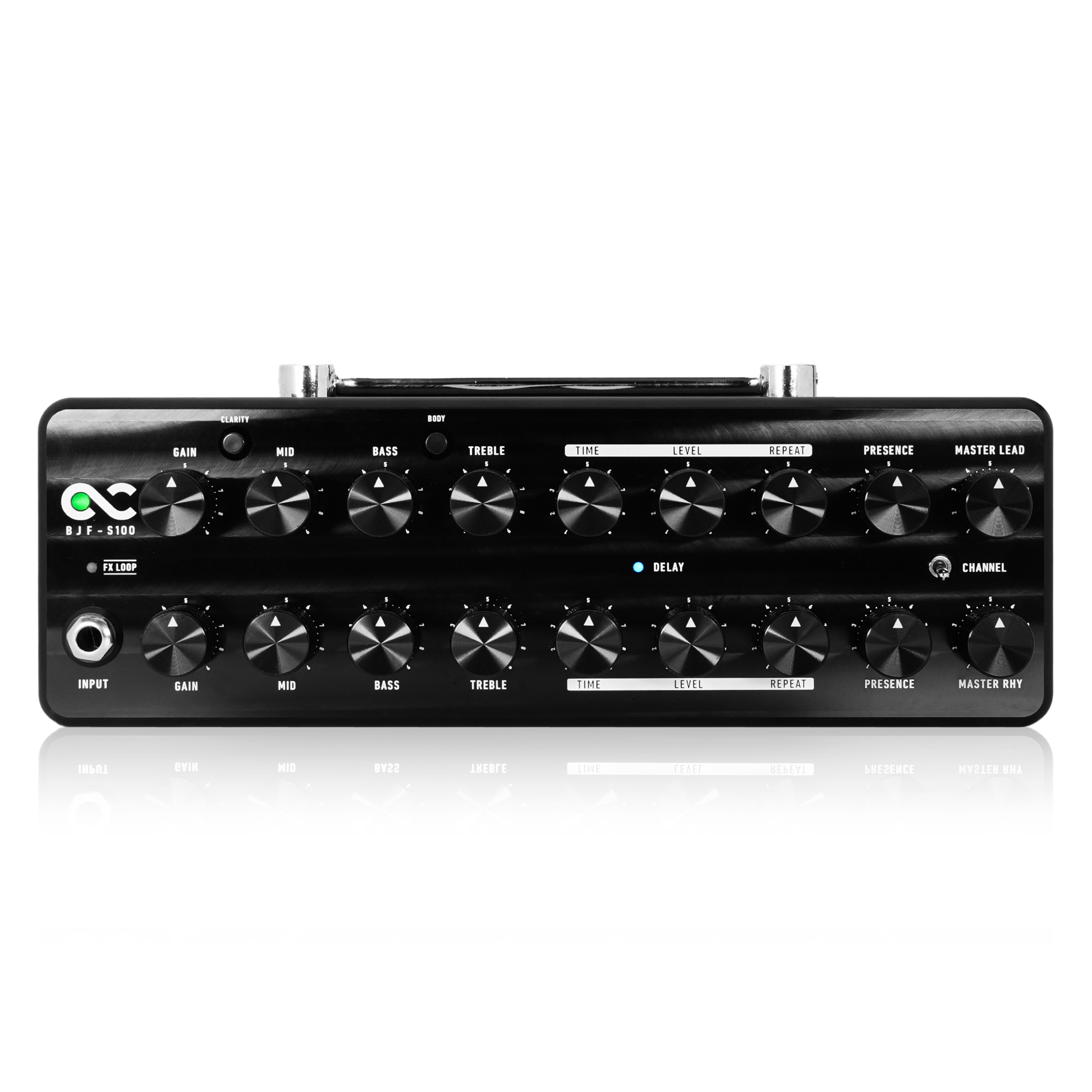
BJF-S100 (OC-S100)
Share
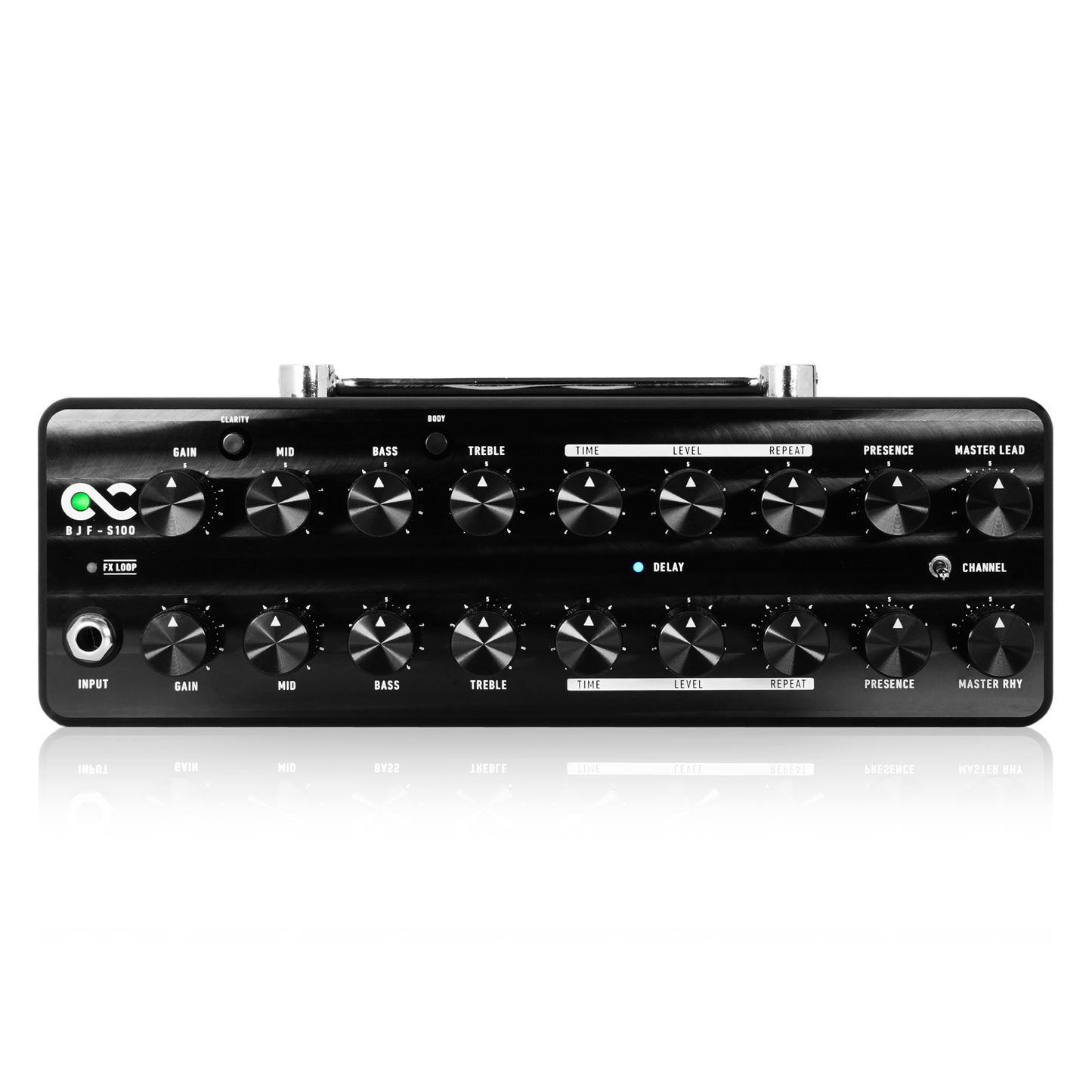
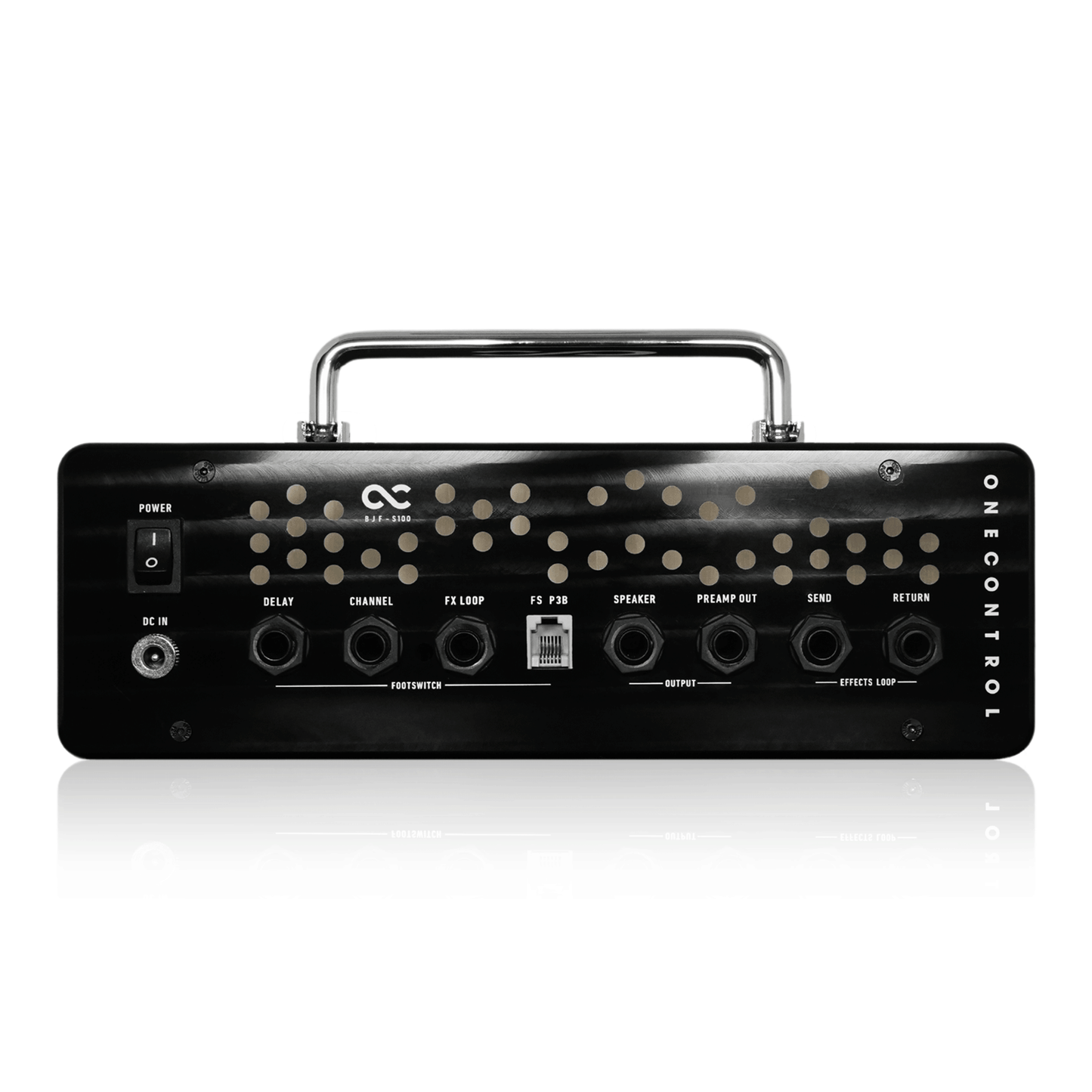
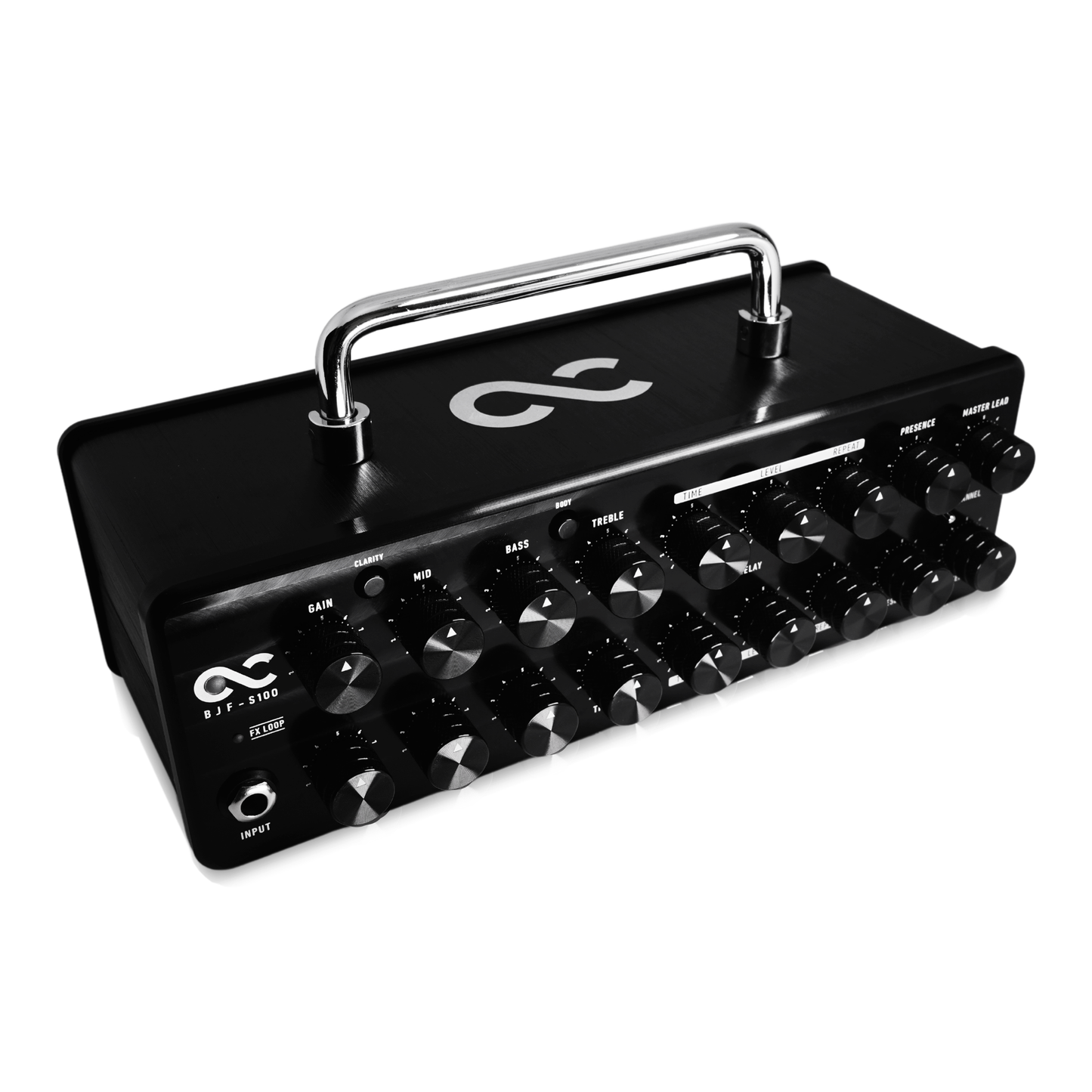
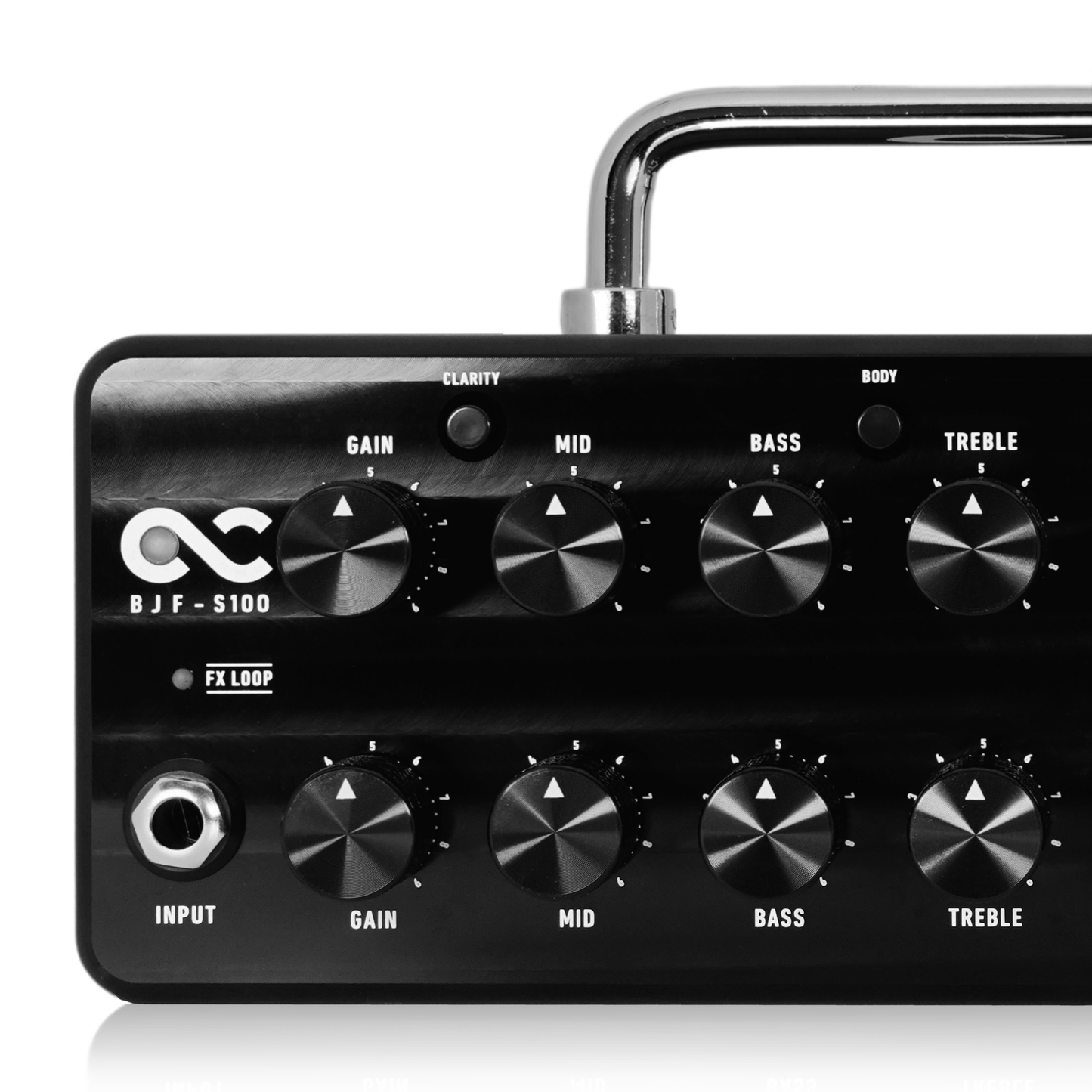
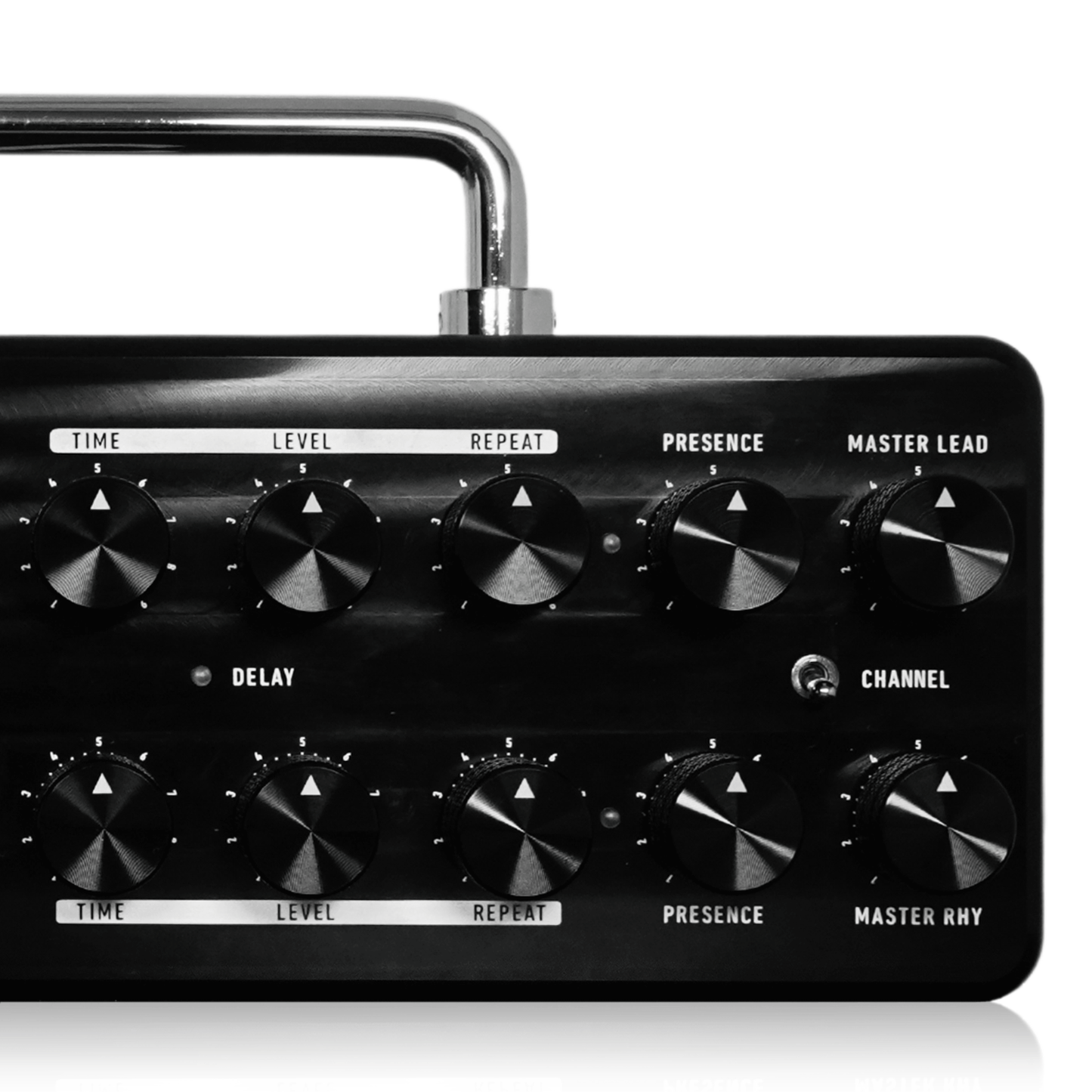
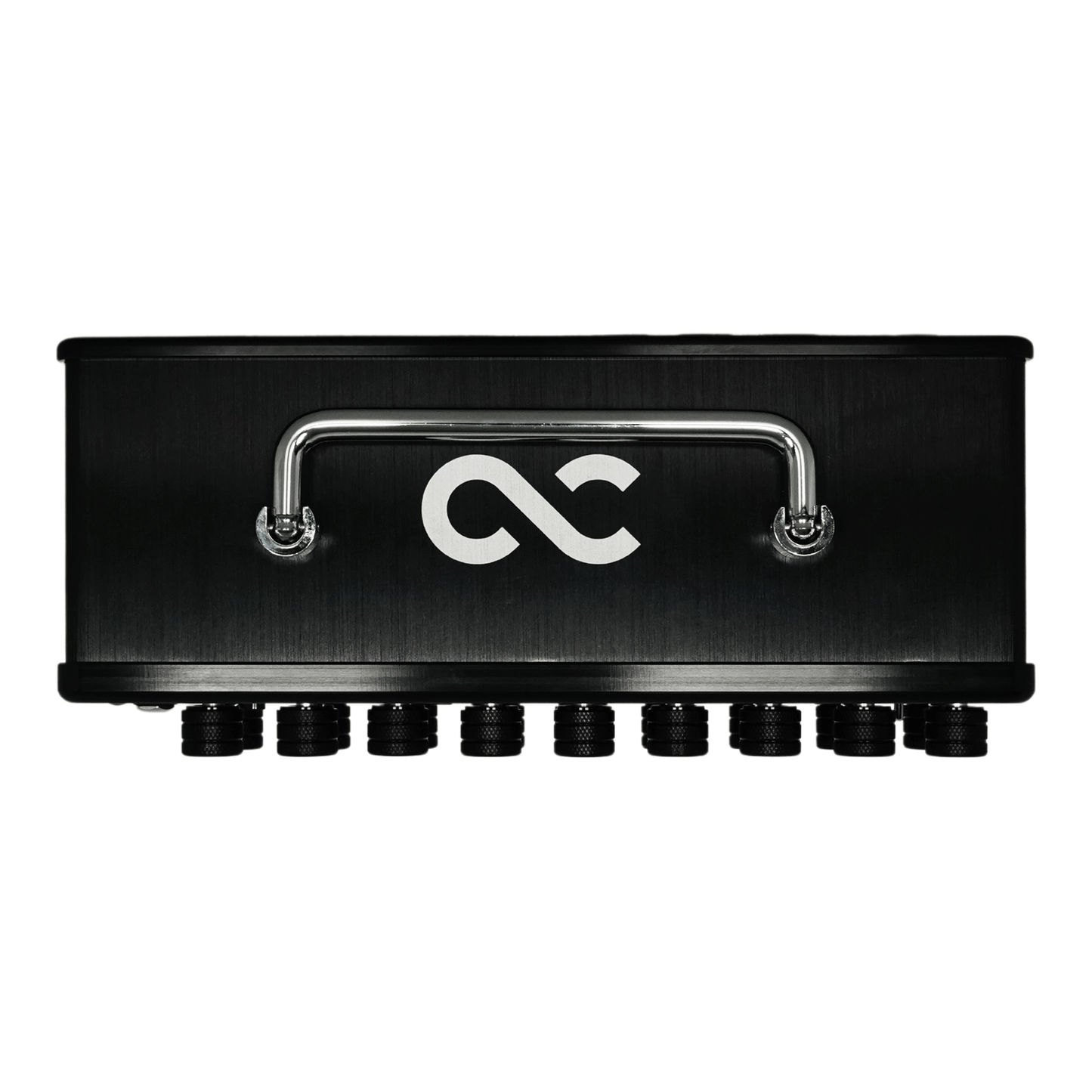
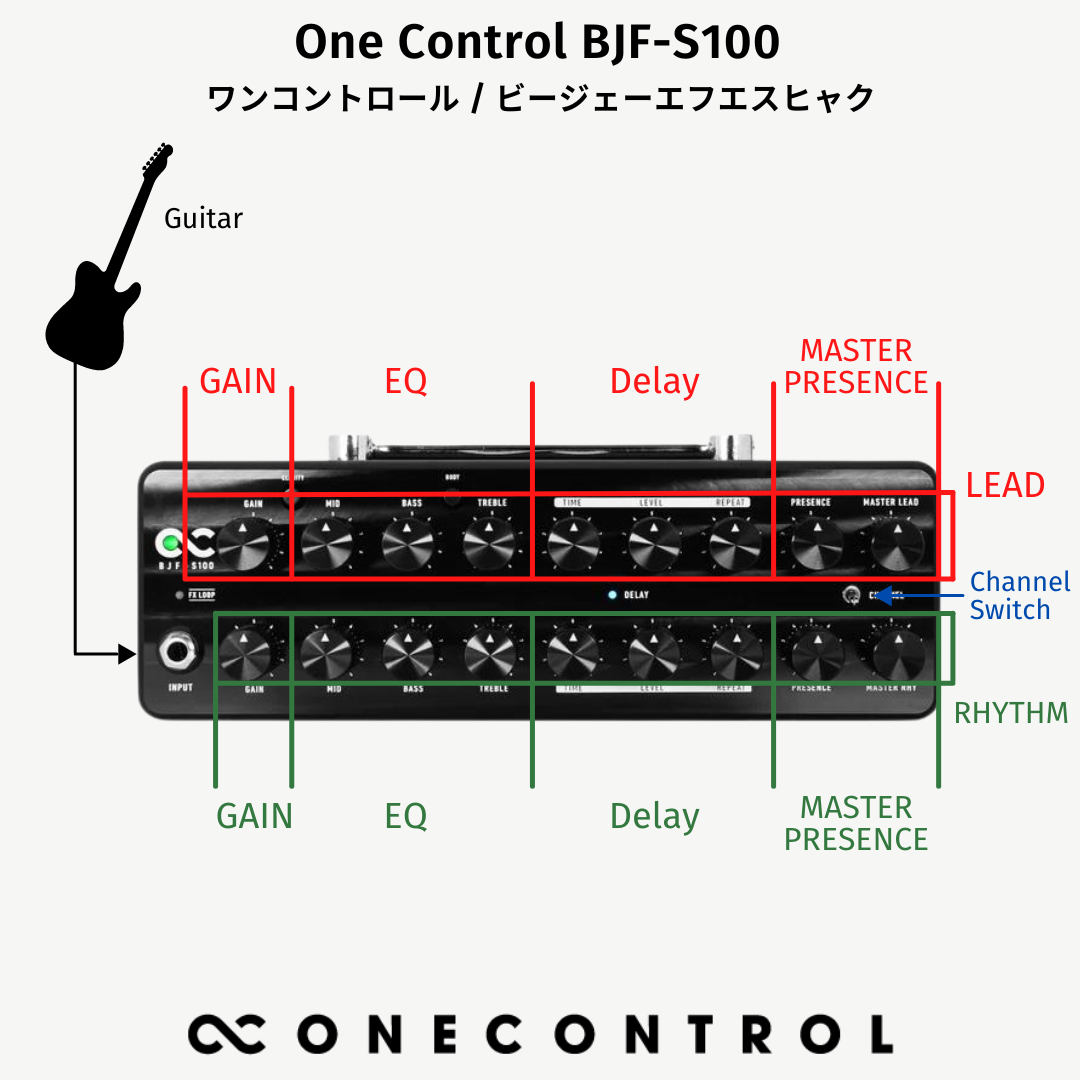
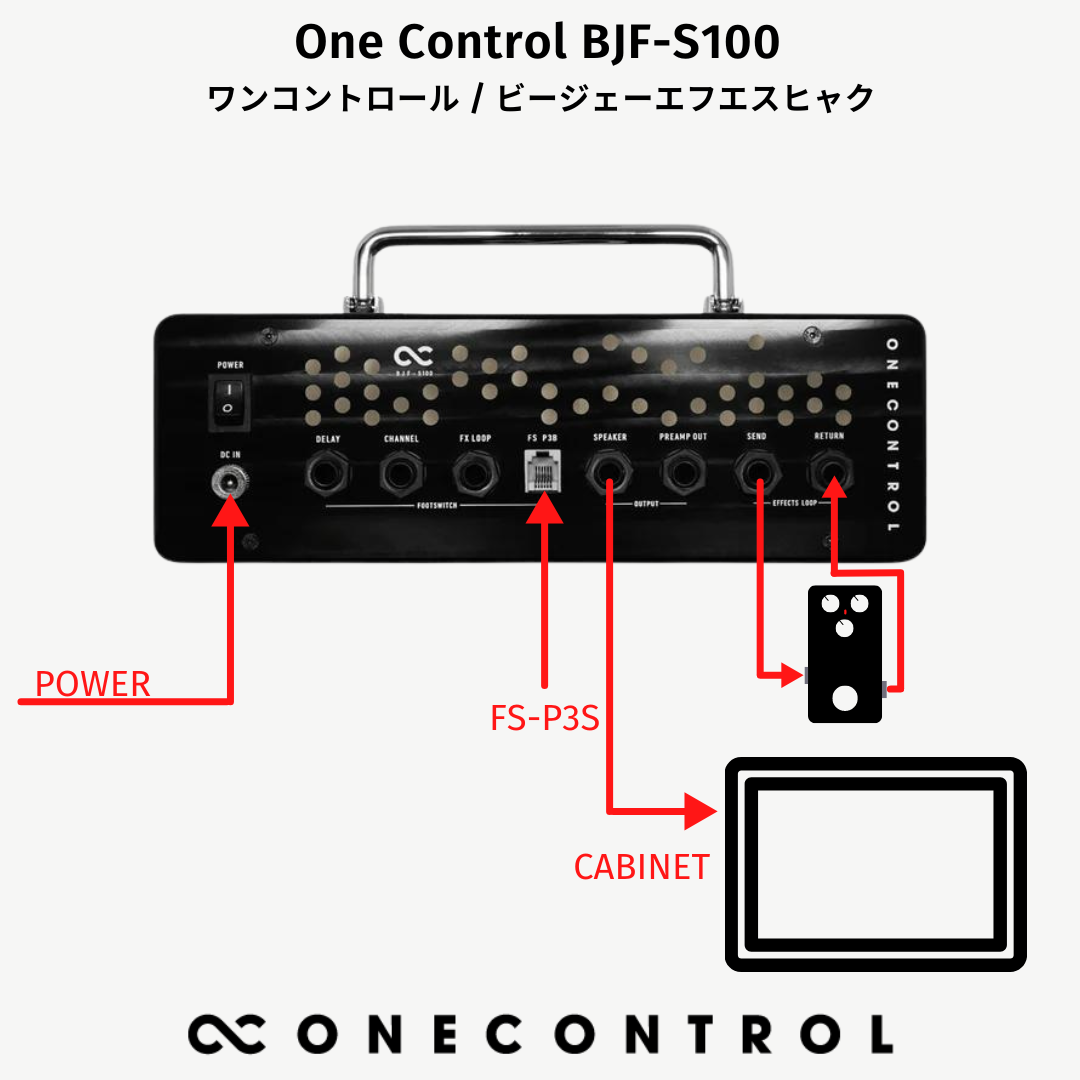
─ VIDEOS ─
─ AMP / CABINET ─
-
BJF-S100 (OC-S100)
Regular price $989.99 USDRegular priceUnit price per$1,237.99 USDSale price $989.99 USD -
FS-P3S (OC-FS-P3S)
Regular price $99.99 USDRegular priceUnit price per$124.99 USDSale price $99.99 USD -
BJF-S66 (OC-S66n)
Regular price $799.99 USDRegular priceUnit price per$999.99 USDSale price $799.99 USD -
BJF-S100 with FS-P3S (OC-S100WFS)
Regular price $1,079.99 USDRegular priceUnit price per$1,349.99 USDSale price $1,079.99 USD


